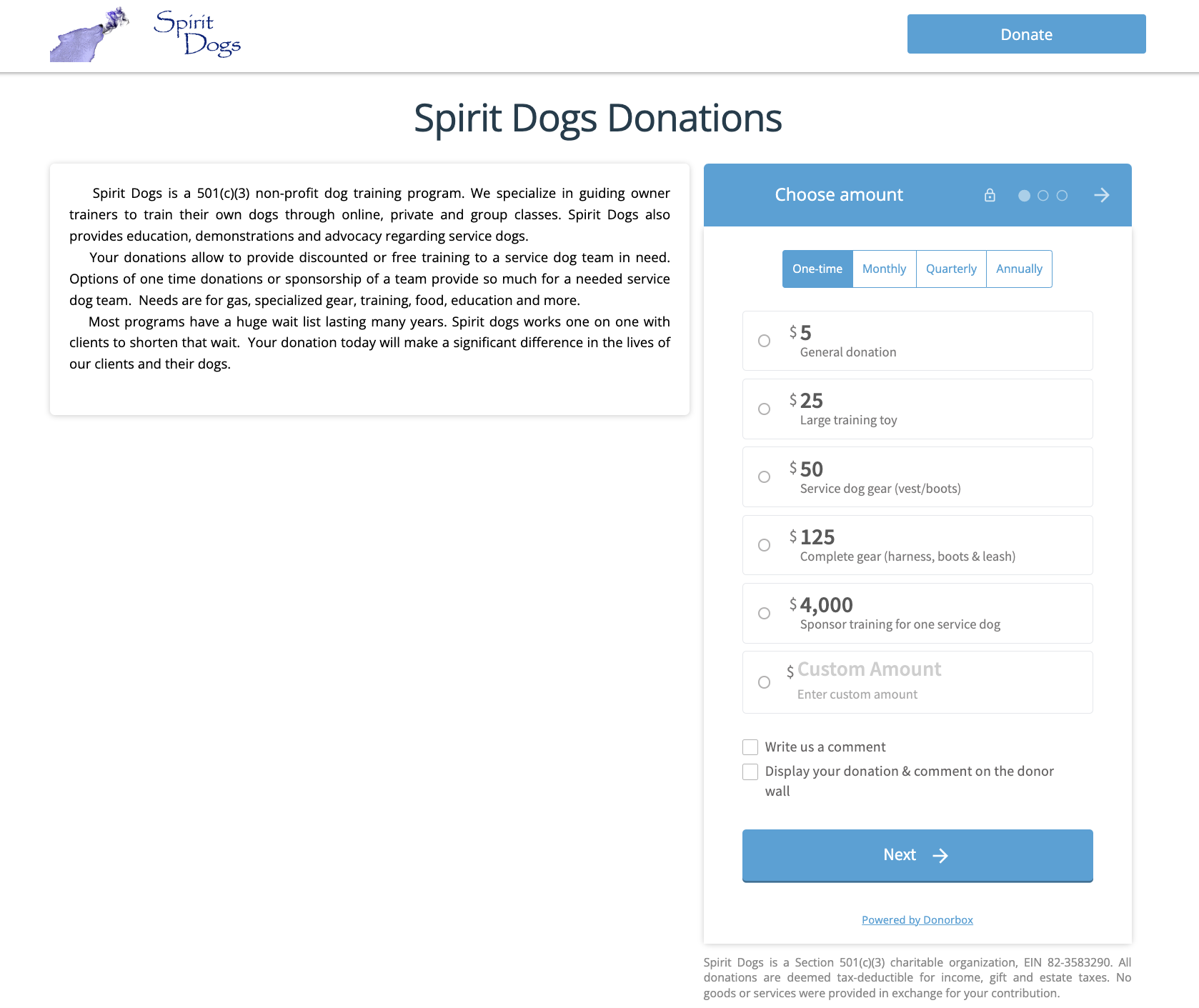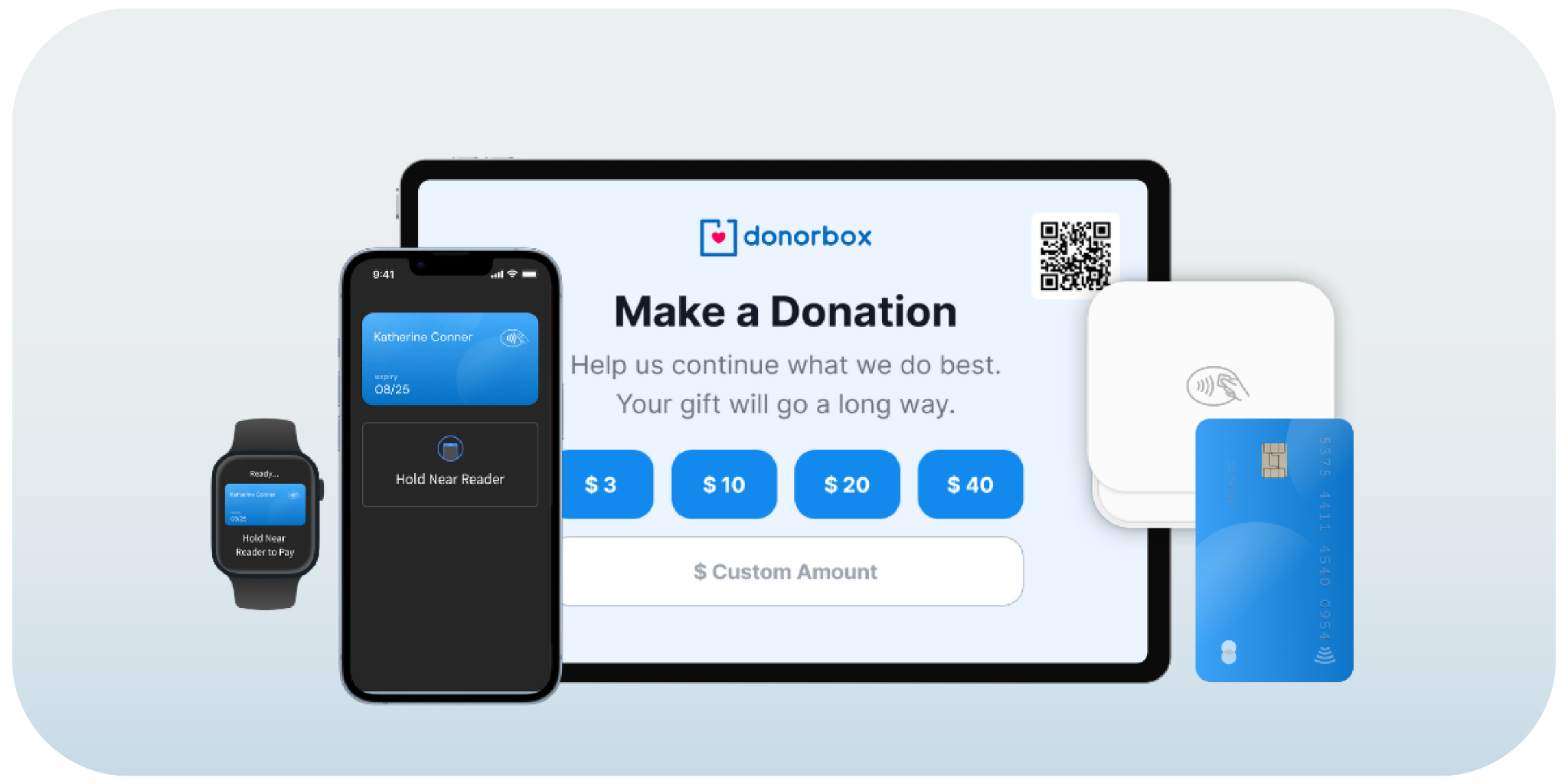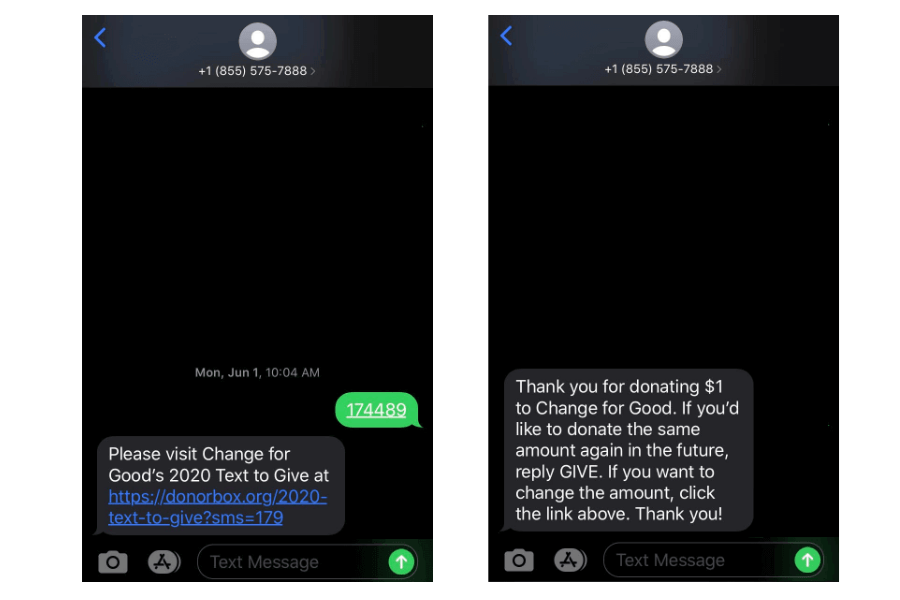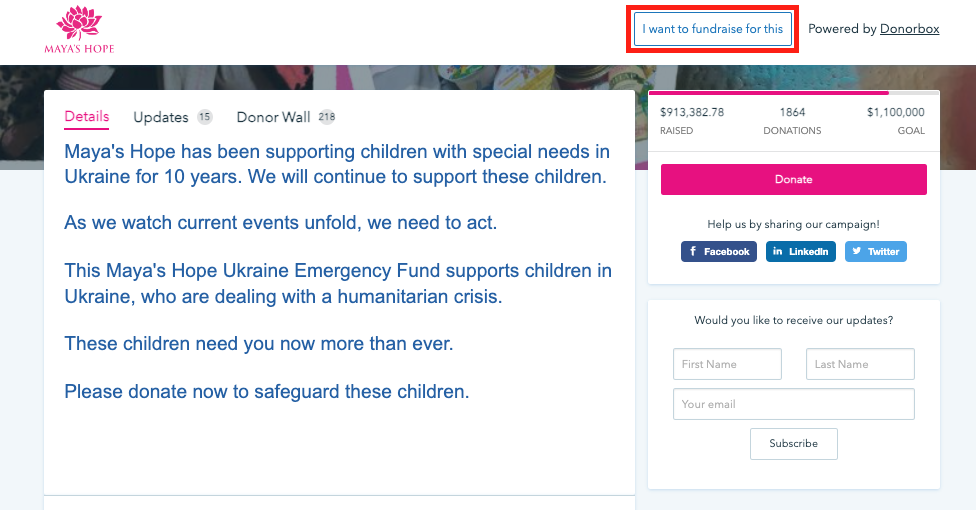Whether you’re a seasoned pro or just getting started, knowing which type of fundraising is best for your organization or campaign can be tricky. There are many types to choose from – and the best fundraising strategies will utilize many.
Use this guide as a reference point for deciding which types of fundraising will work best for you and your campaign.
Basics to Help You Get Started
1. First, understand your donors
When you understand your donors and what matters to them, you’ll be able to connect with them in a meaningful and relevant way.
Think about your donors. Where are they located? What’s their average age? What’s the best way to reach them? How do they like to be addressed? What’s their communication style? What do they care about? What drives them and motivates them?
Pro tip: Donor management software can help you get a handle on these demographics. With Donorbox donor management, you can sort donors by a variety of unique filters. Plus, build a donor profile for each donor including information like employer, birthday, communication records, and more.
2. Segment your donors.
Donor segmentation is the process of categorizing donors based on characteristics such as demographics and interests. You can segment your donors according to a variety of characteristics, depending on your nonprofit’s mission and size.
For example, you can segment your donors according to how they were acquired, according to their gift size, engagement level, frequency of giving, and more.
Donorbox donor management helps with segmentation, too! Use the filtering tool to quickly pull lists for email outreach.
3. Set goals
To successfully raise funds, your nonprofit needs to set donor acquisition and fundraising goals.
A good first step to take is to pull data from the past five years and take a look at your fundraising results from the past.
Understand how much money you need to raise this year to progress towards your mission, balancing that out with results from the past. Make sure to set a timeline for these goals.
10 Different Types of Fundraising Methods (Including Pros and Cons)
1. Online Donations
Online donations are the bread and butter for most nonprofits. Secure, dependable online giving is how the majority of donors prefer to give these days – and that’s unlikely to change.
Most online donations take place through a dedicated donation page on your website.
Therefore, a donation page, powered by an online donation platform, is the single most important thing you need to invest in if you want to acquire donors online. Make sure the experience a prospect has on your website is user-friendly and smooth.
Donorbox has you covered with attractive, accessible, and mobile-friendly donation forms that you can customize to fit your fundraising needs. Easily change your prefilled donation amounts, include important context to demonstrate the impact of each donation level, and choose up to four donation intervals to leverage recurring giving. Embed your donation form right on your website or host it on Donorbox.
Check out how Spirit Dogs uses Donorbox for their donation form. We love how they explain what each level of giving means for their mission.

Customize Your Donation Form
Pros
The barrier to entry for online fundraising is low. Getting started with Donorbox takes only fifteen minutes and four easy steps.
Plus, online fundraising reaches a wide market. You can raise money from all kinds of donors and are no longer limited by location, audience, beneficiaries, and volunteers.
Cash flow from online fundraising is virtually instantaneous, which is so important for nonprofits with limited resources.
Properly executed, online fundraising is simple, secure, and easy for donors. With Donorbox UltraSwift™ checkout, donors can enjoy a checkout process that’s four times faster by using their preferred digital wallet. This saves them from entering their contact and payment information!
Also, online fundraising helps nonprofits by providing valuable data insights via analytics and reporting tools. This helps you create powerful fundraising strategies.
Cons
The explosion in online giving campaigns and solicitations can lead to “donor fatigue,” meaning donors are constantly getting asked for donations – and that gets tiring. It can be harder to make your organization stand out.
This means your campaigns need to be imaginative, immersive, and targeted, which can take more energy and budget upfront.
2. Direct Mail
An oldie but a goodie, direct mail fundraising is still a useful tool for nonprofits to connect with donors and bring in more donations.
Direct mail has a response rate of about 5.3% – way higher than the email response rate of 0.1%.
Whether you’re soliciting donations through checks or directing people to your online donation form via QR codes in your mailings, direct mail is your chance to catch donors’ eyes.
Pros
Direct mail enables nonprofits to reach donor segments that online fundraising might not reach. If your nonprofit has an older donor pool, you may find direct mail fundraising highly effective. This fundraising method is also particularly useful for local nonprofits who have strong ties to their community.
Direct mail also gives a lot more physical space to work with compared to some forms of online fundraising, hence you can give your donors a lot more information. Direct mail gives you a chance to provide in-depth information to your donors – that can’t be conveyed in a text, on your online fundraising page, or over email.
Cons
Direct mail can be expensive, especially when compared to email marketing, for example. Direct mail also takes time – you have to write the letters, hone the list, track responses, remove people from your list, and keep the addresses up to date.
Postal mail also doesn’t pack quite the same punch as it once did, with many donors simply tossing your mailed outreach.
Again, it can be expensive to stand out in this space. You need a punchy design and high-quality materials to catch the eye of your donors.
3. Events
Fundraising through events has become increasingly popular in the nonprofit community. Whether a nonprofit is hosting a walk-a-thon, gala dinner, art exhibition, concert, silent auction, field day, or movie night, events provide an avenue by which donors and potential donors can interact in person and learn more about the organization.
Depending on the type of event, the money raised might come in different forms. It can be from selling tickets, collecting donations before and during your event, and/or selling things during your event.
Pros
Events are a great way to expand your audience and convert event attendees into donors. Fun events attract a large number of people, which can bring in significant revenue for your nonprofit.
Many corporations and donors are interested in sponsoring fundraising events, which brings in more money for your mission and helps you make important corporate partnerships.
Plus, a great event helps build your organization’s visibility and brand – which brings in more donations down the line.
Donorbox Events makes it easy to create and sell tickets. Set as many ticket tiers as you need, show donors how much of each ticket amount is tax deductible, ask for additional donations on top of ticket sales, and enjoy automated ticket and receipt delivery. These features help you sell more tickets and streamline your workflow to help you better manage your event.
Gathering Ground used Donorbox Events to sell tickets to their sold-out Dinner in the Vineyard event. Their tickets cost $150, $100 of which was a tax-deductible donation.

Launch Your Event Today
Cons:
Events are usually labor-intensive and require a lot of detailed planning. An event can also be ruined because of the weather, a competing event on the same day, a guest not showing up, and many other details over which you have little control.
Plus, if you don’t sell enough tickets or raise enough during your event, you might not be able to cover your expenses.
Pro tip: Plan, plan, plan! Use our free event planning checklist to ensure your day goes as smoothly as possible.
4. Donation Kiosk Fundraising
A donation kiosk helps nonprofits secure more on-site donations. Typically, a donation kiosk is a tablet with a paired card reader that allows donors to give with multiple methods. Donors can checkout on their own, allowing you to passively collect more donations.
The Donorbox Live™ Kiosk app allows nonprofits to turn a tablet and card reader into a powerful donation magnet. Accept donations via cards, smartphones, and smartwatches. Collect valuable donor information (with the donor’s permission!) to begin to cultivate one-time donors into long-term donors.

Pros
Donation kiosks help nonprofits raise more money in an increasingly cashless world. They also make it easy for donors to give more than what they might happen to have in their pockets.
Donation kiosks are usually portable, making it easy to collect donations during an event or in public. Plus, with Donorbox Live™ Kiosk, you can use a tablet you already have – meaning the pricing is very accessible.
Having a donation kiosk helps you meet donor expectations that you will have a cashless giving option. You can also collect donor information, which helps you build a relationship with any one-off donors.
Cons
Some donors may be wary about giving their information to a donation kiosk, especially with door-to-door solicitation or at events that aren’t sponsored by your organization.
A donation kiosk requires a steady internet connection which might make it less portable in some settings.
5. Phone Solicitations
Through the years, fundraising via the telephone has been used by many organizations with varying degrees of success. Phone solicitations are donation requests done over the phone, ranging from one employee making a couple of ‘thank you’ calls to large phone-a-thons. Prioritize calls to those individuals most likely to give you a positive response. The more people know you and are already engaged or invested with you, the greater your likelihood of success.
Pros
Phone calls are as personal as it gets. If done well, donors will feel valued and respected. With phone solicitation, gifts are often large.
Phone solicitation can support every other type of fundraising and can boost direct mail response. It’s scalable, as the numbers can grow over time. Calling donors can increase a fundraiser’s current donor base and increase gifts, get lapsed donors back on board, improve retention, convert donors to monthly donors, and is the perfect way to welcome and say thanks plus generate feedback from donors.
Cons
Phone calls are very labor-intensive. The fundraiser also needs to be well-prepared, skilled at fundraising, enthusiastic about the organization, and willing to make the ask. Some donors are also quite averse to phone solicitation. Therefore, if fundraisers using phone solicitation are not tactful and skilled, they can do more harm than good.
Finally, not everyone who pledges money over the phone will deliver, so follow-up is important.
6. Text-to-Give
Text donations are donations that donors can make via their smartphones. Usually, donors text a keyword to a dedicated number. They are then usually sent the link to the organization’s mobile-responsive donation page. Once a donor fills out their info on this form, they never have to fill it in again and can repeat their donation via text.
There are also text-to-give platforms that don’t require filling in a form (where donors can confirm the donation by simply texting back “yes”).
Donorbox text-to-give helps nonprofits raise more funds with mobile giving. You can select the basic plan or short code plan, depending on how personalized you want to make the text-to-give experience.
Once you share the short code or text-to-give number and the campaign ID with your donors, they can initiate the donation process by text. They will instantly receive the mobile-friendly donation page link in response, where they can donate. Your donors can easily repeat the same donation in the future through text! Here’s what it looks like for your donors –

Get Started With Donorbox
For inspiration, check out these 10 successful text-to-give campaigns.
Pros
Since nearly everyone has a smartphone, text-to-give is easy and convenient for your donors. Donations by text are somewhat like impulse purchases; they involve little to no research on the part of the donor, which means that nonprofits don’t have to capture donors’ attention for very long. The speed and simplicity this type of fundraising provides removes most of the hoops the donors usually have to jump through, so they are less likely to abandon the process.
Plus, it’s a great way to raise money during events, church services, and other in-person opportunities.
Cons
Without a solid fundraising platform, text-to-give can be expensive and complicated. Sometimes there are limited options for engaging with one-time donors if donor information isn’t collected on the donation form.
Donors might be concerned about sharing their phone numbers, too, so you may see some hesitation about involvement.
Luckily, Donorbox automates the entire text-to-give process and provides plans with a flat rate for each campaign. Plus, all text-to-give donor data is collected like any other donor, so you can track the success of your campaigns.
7. Email Marketing
Email marketing is the tried-and-true method for connecting with donors. A solid email strategy can help build relationships with your donors and make compelling asks that donors so donors are excited to give.
Remember, email marketing shouldn’t be all about making the ask. Part of it is developing a relationship with your mailing list through high-value content marketing.
Pros
Email marketing services are generally free for smaller nonprofits, making this a cost-effective fundraising method. Email marketing tools like Mailchimp offer intuitive tools to build attractive emails without any coding know-how.
Compared to other types of fundraising techniques, email marketing acquires customers, supporters, donors, and volunteers faster. Emails are also easily customized/personalized, and it’s very easy to track their effectiveness.
Plus, add a donate button to your email campaign to easily direct donors to your donation form.
Cons
We are swamped by dozens of emails every day, including fundraising and advocacy emails. Therefore, even though the number of subscribers is growing, the engagement rates are dropping. This means organizations need to become increasingly skilled at capturing their readers’ attention.
This often requires more of a time investment with A/B testing, creating eye-catching graphics, and regular outreach (more often than just making the ask!).
8. Crowdfunding
Crowdfunding is all about many individuals each giving a (usually) small donation – $5, $10, $50, $100 – that adds up in a big way. It’s typically best for projects with a specific goal in mind, like a new building or initiative.
Donorbox offers powerful crowdfunding tools that help nonprofits harness the power of the crowd to raise more money. Build your crowdfunding page with videos, text, and images that tell the story of your campaign. Boost social proof with a donor wall, where donors can leave a comment about why this cause is so important to them. Plus, a fundraising thermometer shows donors how close or far away you are from your goal – which encourages more donations!
Check out how Black Girls Code raised over $482,000 with their crowdfunding campaign!

Pros
Crowdfunding often helps an organization promote its campaign and its brand. It can introduce your organization to new audiences through sharing and social media.
Crowdfunding allows organizations to leverage many small donations to raise a larger total amount. Also, a lot less time and money goes into generating donations and connecting with donors when compared to traditional fundraising.
Plus, it’s easy to manage large numbers of donors with Donorbox. All donation receipts are automated and donation information is stored in your Donorbox account, so you can easily track the success of your campaign.
Cons
If an organization doesn’t already have a large audience, it can take a considerable amount of time to market the campaign.
Constant communication with donors is needed, sharing progress updates and major and minor setbacks.
Finally, due to its growth, crowdfunding is a saturated market, so you’ll once again be competing for the attention of your donors.
9. Partnerships/Sponsorships/Grants
Partnerships have always been a staple of nonprofit fundraising. Between matching gift programs, grants, and sponsorships, major donations can come from companies partnering with nonprofits. And the relationship is mutually beneficial. Nonprofits benefit from the resources companies have to offer, and companies benefit from being associated with a charitable cause.
Pros
Grants, sponsorships, and endowments can often amount to incredible sums of money. This allows for the execution of major projects that other types of fundraising might not have been able to fund. A single grant could secure the foreseeable future of your nonprofit activities.
Furthermore, partnering with like-minded organizations can increase your brand awareness.
Cons
Sometimes, grant-giving organizations can be difficult to deal with, due to their inherent bureaucratic nature. This type of fundraising might require you to invest a lot of time and energy. For example, it takes time to write a winning application, and then it can take time for you to gain access to the funds. Plus, you’ll need to provide regular reporting on your grant-funded activities and progress.
Here’s a detailed guide on how to find grants for your nonprofit.
10. Peer-to-Peer Fundraising
Peer-to-peer fundraising is a crowdfunding method that utilizes your donors’ existing networks. It’s an opportunity for your supporters to fundraise on your behalf!
With peer-to-peer fundraising, every individual supporter/fundraiser sets up a personal fundraising page where they accept donations. On these pages, fundraisers lend their voice to the nonprofit’s mission, sharing with their networks why that specific cause matters to them. These donations are ultimately received by the nonprofit.
Donorbox makes it easy to turn any campaign into a peer-to-peer campaign. Simply enable it on your account and choose to either invite your supporters via email or allow anyone to fundraise on your behalf, the way Maya’s Hope did here. They raised over $913,000 using crowdfunding with peer-to-peer enabled.

Add Peer-to-Peer to Your Campaign
Pros
Peer-to-peer fundraising allows nonprofits to reach varying pools of supporters that would have otherwise probably been inaccessible.
It’s an efficient donor acquisition strategy because it utilizes already existing donor bases and their networks. It’s also cost-effective since supporters fundraise on behalf of the organization – with no additional cost to you.
Peer-to-peer fundraising helps build social proof. We are more likely to trust the recommendations of friends or family members. This can help nonprofits acquire more donors and acquire them much faster.
Cons
One of the major drawbacks of peer-to-peer fundraising is the effort it takes to teach the existing donors/fundraisers. Not only do they need to know how to use the fundraising platform, but they need to know how to effectively raise funds – even if they’re raising from their networks.
It can also be challenging to clearly articulate and transmit the nonprofit’s mission, vision, and values to dozens of individuals so that they can continue sharing it in the same way.
Luckily, we have tons of resources to help. Share this step-by-step guide to using Donorbox peer-to-peer fundraising with your fundraisers to help them get started. Learn how to put together a fundraising toolkit so your supporters have everything they need to succeed.
What To Do After The Campaign
1. Build ongoing relationships with your donors.
Building ongoing relationships with donors helps boost donor retention, regardless of which type(s) of fundraising you choose.
Do your best to understand your donors, both prospective and current. Becoming a donor-centric organization is a pivotal step your nonprofit needs to take to boost fundraising.
Here are 9 ways to build strong donor relationships.
2. Measure and evaluate.
It’s incredibly important to measure and evaluate the success of your fundraising strategies and activities. As you decide on different types of fundraising and strategies you’ll put into practice, create metrics (KPIs) related to your goals. These metrics should be key indicators of goal achievement and can be either quantitative, qualitative, or both.
Based on the timeline you created when you created your goals, consistently measure and evaluate your progress. Doing this tells you whether your strategies are the right ones for your audience.
Conclusion
Let’s be honest: sometimes fundraising is hard. Successful fundraising requires nonprofit organizations to use a variety of methods and unrelenting hard work, especially when the pressure is high and the deadlines are tight.
While opinion varies as to what’s the “ideal” nonprofit funding model, utilizing several different types of fundraising is generally a good practice. To find yours, however, it will take trial and error!
Donorbox is your one-stop shop for all types of fundraising. Whether you’re building your donation form, launching a crowdfunding campaign, sharing text-to-give with your donors, or selling tickets to a fundraising event, Donorbox has streamlined and user-friendly tools to streamline your processes and get more donations. Plus, powerful donor management tools help you build relationships with your donors for more repeat donations.
If you want to learn more about fundraising, visit the Nonprofit Blog for more tips and resources. Subscribe to our newsletter for a curated list of blogs delivered to your inbox every month!










